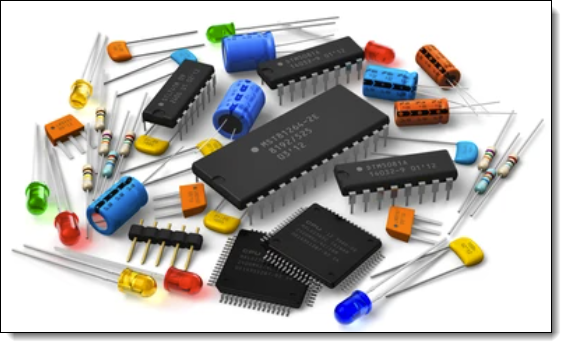Printed Circuit Boards (PCBs) are essential components of nearly all modern electronic devices. They provide a physical base for mounting and interconnecting electronic components.

A Selection of Parts
Various parts are used in PCBs, including:
•Resistors These control the electric current flowing through a circuit by offering resistance.
•Capacitors: Capacitors store and release energy. They're essential for filtering noise, tuning resonant circuits, and storing energy as needed.
•Inductors: These components can store energy in a magnetic field when electric current flows through them. They're used in a variety of applications, including in filters and transformers.
•Diodes: Diodes allow current to flow in one direction but not the other. They are often used for converting AC to DC power (rectification), among other applications.
•Transistors: These can amplify and switch electronic signals and electrical power.
•Integrated Circuits (ICs): These are a set of electronic circuits on one small flat piece (or "chip") of semiconductor material, usually silicon. ICs can serve functions such as microprocessors, memory, or even complete digital systems.
•Connectors: These provide a path for electrical power or signals to flow into and out of the PCB.
•LEDs: Light Emitting Diodes provide visual feedback or illumination.
•Switches: These allow for manual control over the electric circuit.
•Quartz Crystal Oscillators: They generate an electrical signal with a precise frequency. Used for clock signals in microprocessors and to stabilize frequencies for radio transmitters and receivers.
•Potentiometers: These are three-terminal resistors with a sliding or rotating contact that forms an adjustable voltage divider.
•Fuses: This is a protective device that melts or breaks a circuit when the current flow exceeds a particular limit.
These components, among others, are soldered onto the PCB to create a complete electronic circuit. The specific parts used can vary widely depending on the intended function of the PCB.